#UN permanent Forum on Indigenous Issues in New York
Text
At the world’s largest gathering of Indigenous leaders, women are talking about how to hold financial institutions accountable for fueling climate catastrophe through investments in the extractive industry.
Michelle Cook, Navajo, was among those who offered powerful testimonies focused on the women at the frontlines of extractive projects, the boardrooms of financial institutions, and the halls of governments. Speaking at a side event hosted by Women's Earth and Climate Action Network at the 21st session of the U.N. Permanent Forum on Indigenous Issues in New York, Cook described the work as being part of a sacred obligation.
#Indigenous#Extraction#Future#Sustainable#Women#Boardrooms#Indian country today#Michelle cook#Navajo#Climate Action network#UN permanent Forum on Indigenous Issues in New York#Obligation
168 notes
·
View notes
Text

youtube
World Indigenous leaders meeting this week at an annual UN summit have warned that the west’s climate strategy risks the exploitation of Indigenous territories, resources and people.
New and emerging threats about the transition to a greener economy, including mineral mining, were at the forefront of debate as hundreds of Indigenous chiefs, presidents, chairmen and delegates gathered at the 22nd United Nations Permanent Forum on Indigenous Issues.
“It is common to hear the expression to ‘leave no one behind’. But perhaps those who are leading are not on the right path,” the forum’s chairman, Dario Mejía Montalvo, told delegates on Monday as the 12-day summit opened in New York in the first full convening since the pandemic outbreak.
The longtime advocacy group, Cultural Survival, in partnership with other organizations, highlighted how mining for minerals such as nickel, lithium, cobalt and copper – the resources needed to support products like electric car batteries – are presenting conflicts in tribal communities in the United States and around the world.
As countries scramble to uphold pledges to keep global warming to 1.5C (2.7F) above pre-industrial levels by 2030, big business and government are latching on to environmentally driven projects such as mineral needs or wind power that are usurping the rights of Indigenous peoples – from the American south-west to the Arctic and the Serengeti in Africa.
Brian Mason, chairman of the Shoshone-Paiute Tribes of the Duck Valley Indian reservation in Nevada said that the 70 or so lithium mining applications targeting Paiute lands have come without free, prior and informed consent – what is considered the cornerstone of the UN Declaration on the Rights of Indigenous Peoples. He described the lithium extraction efforts as being on a “fast track” to supply the Biden administration’s net-zero strategy to create a domestic supply of EVs . “It’s kinda just being rammed down our throats,” he said. “At the cost of Indigenous peoples once again.”
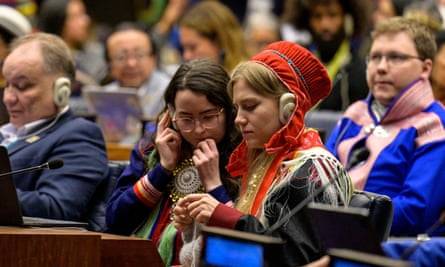
Gunn-Britt Retter of the Saami Council, an organization representing the Sami peoples of Finland, Russia, Norway and Sweden, said she had been raising awareness about what she calls the “green colonialism” driving harmful sustainability projects on Sami and Indigenous lands. The most recent example has been the Fosen onshore windfarm that was built despite a supreme court ruling in Norway in defense of Sami reindeer herding grounds.
“They look to us to carry the heaviest burden and it’s a disproportionate part of the burden,” she said of Indigenous peoples caught in the middle of a climate conundrum. “We need to reduce CO2 emissions globally, and we need to seek alternative energy sources, but we also need to protect the Indigenous cultures because we are the guardians of nature, which is part of the solution.”
Mejía Montalvo, who belongs to the Zenú peoples of San Andrés Sotavento in Colombia, said global climate talks have failed to properly include Indigenous peoples, yet at the same time, such dialogue has relied on a well of Indigenous knowledge systems to imagine future climate goals. “The issue of climate change and biodiversity cannot be resolved without the real and effective participation of Indigenous peoples.”
He urged the 193 member states affiliated with the UN, as well as its international governing bodies, to set a quota for actions that guarantee Indigenous peoples can take part in decisions affecting our planet, and in a way that puts them “on equal footing” with states – meaning, voting power, which Indigenous peoples lack.
The most recent example of the disparity came last fall in the historic “loss and damage” fund for vulnerable countries reached at Cop27 in Egypt. Indigenous peoples lacked explicit reference in the agreement, despite many world leaders, including the US president, Joe Biden, acknowledging the importance of Indigenous peoples in mitigating and adapting to climate change.
But there has been progress. The rights-based Paris agreement within the UN Framework Convention on Climate Change (UNFCCC) – the environmental treaty to combat the climate crisis – has provided a rare opportunity for formal Indigenous participation in the creation of the Local Communities and Indigenous Peoples’ Platform (LCIPP). The constituent body held its first meeting as a recognized working group in 2019, and engaged in dialogue with the Cop presidency last year in Sharm El-Sheikh.
Of the short cast of international leaders who spoke at the start of the global event on Monday was the first ever appearance by a UN secretary general, António Guterres, at a permanent forum opening ceremony. Also present was Deb Haaland, US interior secretary and tribal citizen of the Pueblo of Laguna, who received a standing ovation following her remarks where she acknowledged a litany of historic injustices against Indigenous peoples and a collective need to heal, saying Indigenous peoples must be brought into the fold in global human rights decision-making.
Lahela Mattos of Ka’Lāhui Hawai’i and a representative of the Global Indigenous Youth Caucus, urged the permanent forum chair to work with UN agencies like the World Health Organization to develop and implement comprehensive policies to better protect the safety of Indigenous women and girls as a way to protect the planet. “The destruction of and violence committed against our Earth Mother perpetuates, violence against Indigenous peoples, specifically Indigenous women who are protectors and bearers of life on this planet.”
The recommendation regarding “environmental violence” on Indigenous women and girls was first featured in a recent human rights treaty body outcome and represents one of the first fundamental links between human rights abuses and environmental catastrophe – a connection that most stakeholders grappling with the climate crisis have yet to make.
“Let us not forget that climate is the language of Mother Earth,” said Mejía Montalvo.
#green colonialism#indigenous#indigenous peoples#systemic racism#climate change#climate crisis#equity#world health organization#united nations#global climate crisis#Youtube
4 notes
·
View notes
Text
Opening of the Permanent Forum on Indigenous Issues (UNPFII 23)
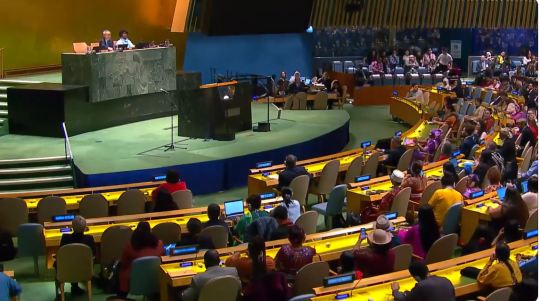
The twenty-third session of the UN Permanent Forum on Indigenous Issues (UNPFII) will take place in-person at UN Headquarters in New York from 15-26 April 2024. Theme: "Enhancing Indigenous Peoples' right to self-determination in the context of the United Nations Declaration on the Rights of Indigenous Peoples: emphasizing the voices of Indigenous youth" Opening of the session Item 1: Election of officers
Item 2: Adoption of the agenda and organization of work The United Nations Permanent Forum on Indigenous Issues (UNPFII) is a high- level advisory body to the Economic and Social Council.
The Forum was established on 28 July 2000 by resolution 2000/22, with the mandate to deal with indigenous issues related to economic and social development, culture, the environment, education, health and human rights.
#openingsession#sustainability#unpfii23#indigenousissues#Indigenous Education#Indigenous Health#indigenous culture#environmental issues#SocialIssues#webcast#right to self determination#permanent forum on indigenous issues#weareindigenous#everyoneincluded
0 notes
Text
Pratima Gurung
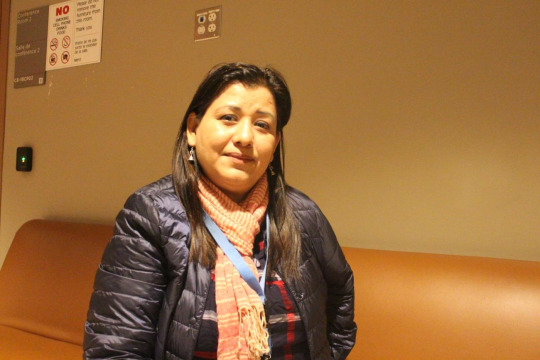
Pratima Gurung (Gurung) became disabled at the age of seven after she lost her hand in an automobile accident. She has spoken about how her parents valued education and made sure she received a quality education, a rare opportunity for most Indigenous women and women with disability in Nepal. Today, Gurung is leading the advocacy effort for women with disabilities and Indigenous women in Nepal and internationally. She is the general secretary for Indigenous Persons with Disabilities Global Network and Nepal Indigenous Disabled Association (NIDA), chair of the National Indigenous Disabled Women Association Nepal (NIDWAN), and a faculty member at Padma Kanya College in Kathmandu. Indigenous Peoples comprise more than 35 percent of Nepal’s population, and persons with disabilities make up at least 1.94 percent of that population. Gurung is fighting for access, inclusion, and participation in decision making, and collective rights of Indigenous women and persons with disabilities, as the current Nepalese constitution does not ensure full and effective participation of all Indigenous Peoples at all levels due to their exclusion in the document’s drafting process. Cultural Survival’s Dev Kumar Sunuwar spoke with Gurung about her work at this year’s UN Permanent Forum on Indigenous Issues in New York.
Read the interview at: https://www.culturalsurvival.org/publications/cultural-survival-quarterly/nothing-about-us-without-us-struggle-inclusion-indigenous
#women in history#living people#20th century history#21st century history#1900s#asian women in history#indigenous asian women#nepali women#disabled women in history#sorry i don't know her birth year
1 note
·
View note
Video
youtube
Policing the Quarantine
Heavy-handed policing was deployed in response to the Covid-19 outbreak in the nine tower blocks in Melbourne where residents are mainly Black, Brown and Asian. Fines have been administered more in suburbs where the Aboriginal and Torres Strait Islander and/or migrant population is higher. But, the same logics of colonial policing used for over 200 years are also affecting other groups at a time when a policing, rather than a public-health oriented, response to the pandemic is being rolled-out by state governments with the use of fines, lockdowns, curfews, and even prison sentences against those who are seen as failing to comply with Covid orders.
Panellists
Roxanne Moore is a Noongar woman and human rights lawyer from Margaret River in Western Australia. She is the Executive Officer for the National Peak body on Aboriginal and Torres Strait Islander Legal Services (NATSILS ). Previously, Roxanne was an Indigenous Rights Campaigner with Amnesty International Australia and Principal Advisor to Change the Record Coalition. Roxanne has worked for the Aboriginal and Torres Strait Islander Social Justice Commissioner at the Australian Human Rights Commission, as Principal Associate to the Hon Chief Justice Wayne Martin AC QC; as a commercial litigator; and has international experience with UNHCR Jordan and New York University’s Global Justice Clinic. Roxanne studied law at the University of WA, and completed an LLM (International Legal Studies) at NYU, specialising in human rights law, as a 2013 Fulbright Western Australian Scholar. Professor
Megan Davis is Pro Vice-Chancellor Indigenous and Professor of Law at UNSW. She is Acting Commissioner of the NSW Land and Environment Court and was recently appointed the Balnaves Chair in Constitutional Law. Professor Davis currently serves as a United Nations expert with the UN Human Rights Council's Expert Mechanism on the rights of Indigenous peoples based in UN Geneva. Megan is an Acting Commissioner of the NSW Land and Environment Court. Professor Davis is a Fellow of the Australian Academy of Law and a Fellow of the Australian Academy of Social Sciences. She is a member of the NSW Sentencing Council and an Australian Rugby League Commissioner. Professor Davis was Director of the Indigenous Law Centre, UNSW Law from 2006-2016. Professor Davis is formerly Chair and expert member of the United Nations Permanent Forum on Indigenous Issues (2011-2016). As UNPFII expert she was the focal point for UN Women and UN AIDS. During this period of UN service, Megan was the Rapporteur of the UN EGM on an Optional Protocol to the UNDRIP in 2015, the Rapporteur of the UN EGM on Combating violence against Indigenous women and girls in 2011 and the UN Rapporteur for the International EGM on Indigenous Youth in 2012. Megan has extensive experience as an international lawyer at the UN and participated in the drafting of the UNDRIP from 1999-2004 and is a former UN Fellow of the UN Office of the High Commissioner for Human Rights in Geneva.
Dr Vicki Sentas is a senior lecturer in the Faculty of Law at UNSW. She researches processes of criminalisation and racialisation in law and policing. She teaches in criminal law, criminology and policing and coordinates the Police Powers Clinic, an experiential learning course, in partnership with Redfern Legal Centre. Her recent and current research projects examine: the effects of counter-terrorism practices on criminal justice and racialised peoples; the criminalisation of armed conflicts, self-determination and diasporas through the use of security lists; police powers and their relationship to diverse forms of regulation including pre-emption and prosecution; police accountability and criminal justice reform.
#zee sociology#sociology#social science#race#racism#police#politics#criminology#united nat#constitution#aboriginal#australia
3 notes
·
View notes
Link
Hereditary leaders from the Wet'suwet'en Nation in northern B.C. told the United Nations special rapporteur on the rights of Indigenous Peoples Wednesday their human rights are being violated by pipeline development on their territory.
Hereditary chief Na'moks and FredaHuson, longtime spokesperson and resident at the Unist'ot'en camp in Wet'suwet'en territory, made statements to the special rapporteur at the meeting of the UN Permanent Forum on Indigenous Issues in New York.
They expressed concern over how tensions between their leadership, Canadian institutions and industry have been playing out in recent years, asking for the UN to take specific action.
"We are troubled by the ongoing trend in Canada that the interests of corporations for natural resource extraction are superseding the rights of Indigenous people on our lands and territories," Na'moks told the rapporteur.
Na'moks asked the UN to emphasize to Canada the need to fully implement the UN Declaration on the Rights of Indigenous Peoples and that states need to recognize the human right of people to peacefully express dissent to activity in their territories without being criminalized.
Continue Reading.
#wet'suwet'en#Indigenous#human rights#cdnpoli#canada#canadian politics#canadian news#canadian#Unist'ot'en#First Nations
126 notes
·
View notes
Link
Pratima Gurung (Gurung) became disabled at the age of seven after she lost her hand in an automobile accident. She has spoken about how her parents valued education and made sure she received a quality education, a rare opportunity for most Indigenous women and women with disability in Nepal. Today, Gurung is leading the advocacy effort for women with disabilities and Indigenous women in Nepal and internationally.
She is the general secretary for Indigenous Persons with Disabilities Global Network and Nepal Indigenous Disabled Association (NIDA), chair of the National Indigenous Disabled Women Association Nepal (NIDWAN), and a faculty member at Padma Kanya College in Kathmandu. Indigenous Peoples comprise more than 35 percent of Nepal’s population, and persons with disabilities make up at least 1.94 percent of that population.
Gurung is fighting for access, inclusion, and participation in decision making, and collective rights of Indigenous women and persons with disabilities, as the current Nepalese constitution does not ensure full and effective participation of all Indigenous Peoples at all levels due to their exclusion in the document’s drafting process. Cultural Survival’s Dev Kumar Sunuwar spoke with Gurung about her work at this year’s UN Permanent Forum on Indigenous Issues in New York.
Cultural Survival: Please give us a brief background about the challenges facing Indigenous Peoples, and particularly Indigenous women with disabilities.
Pratima Gurung: If you look at the global data, we are 54 million Indigenous people with disabilities all around the globe. When it comes to my country, Nepal, we are 1.3 million Indigenous people with disabilities. When when we look at the overall population of women and Indigenous women in Nepal, we have about 7 million women with disabilities in Nepal. The first challenge I experience as an Indigenous woman with disabilities is about meaningful representation. It involves who you are, where you are represented. Because as soon as you are a woman, and an Indigenous woman, and a woman with disabilities, all of these identities keep you limited within the four walls. It comes to a point that your voice, your representation, your identification, and your recognition is the primary thing, and that begins from home, from the family, from the private sphere to the public sphere. The second challenge is about being disabled and the stigma associated with it. When you are a woman with disabilities, you have many serious and critical issues related with your life. The third thing is insuring your basic fundamental needs, like education, your social background, your economic status, your employment opportunities, your accessibility.
CS: What is it like to lead the Indigenous Peoples with disabilities movement as an Indigenous woman?
Pratima: It has really been a challenge for me. I was working for the Indigenous Peoples’ movement in 2001, looking over all the holistic dimensions of Indigenous women. As a researcher in the field, I was working with people with disabilities’ issues and I was not able to identify the issue of Indigenous people with disabilities or Indigenous women with disabilities. I began to realize that Indigenous women with disabilities are not able to make their voices heard. That made me question even myself as an Indigenous woman with disabilities: What am I contributing to my community, and what is my role? That was the dilemma for me, whether to move within the Indigenous movement or to move forward within the disability movement. So, I thought, why not have intersections of Indigenous and disability.
I got an opportunity to work with the International Disability Alliance as a fellow in 2013. That was the turning point for me: why not work on the issues of Indigenous people with disabilities in my own country? Nepal has so much diversity, not only in terms of religion/language, but also in terms of human diversity. That led me to move forward in working on Indigenous people with disabilities and also Indigenous women with disabilities, to also raise the issue at the global forum, in the international forum, even the United Nations. Disability has become a cross-cutting issue. How can disability issues be sensitized within the Indigenous movement and discourse, and how can the disability movement in the discourse value and integrate Indigenous values and practices? These are the things we are focusing on collectively from the ground and to the national level and international level.
CS: You have been involved in Indigenous Peoples’ issues for about two decades. Could you share guidelines for how Indigenous women can take the lead?
Pratima: First, I really want to highlight the effective and meaningful participation of Indigenous women at all levels. Today we want Indigenous women at the table, we want them to make their decisions, we want them to make their concrete ideas known about the issues and concerns that are affecting their lives. We don’t want others who would make a decision and an agreement on behalf of us. Indigenous women with disabilities have to be brought to the frontlines by their effective and meaningful participation. The second thing is about the level of awareness and active engagement at the national level and at the grassroots level, to bring a collective and collaborative approach to raise the issues that Indigenous women with disabilities are facing not only within the Indigenous women’s movement, or Indigenous Peoples movement, but beyond it. We have to look at it in a very comprehensive way...how can we collaborate and move forward to face these challenges with our government, the United Nations, and all the relevant stakeholders.
CS: What are some of the core rights guaranteed by the international human rights treaties or conventions?
Pratima: The Convention on the Rights of Persons with Disabilities (CRPD) is an evolving and recent human rights treaty body. In the preamble B, it mentions Indigenous identity. Also, if you see the number of recommendations in the concluding observations that have been provided by the CRPD Committee to a number of member states, we can clearly find the issues of Indigenous people with disabilities or Indigenous women with disabilities reflected in those documents which state that these groups are marginalized, vulnerable, and excluded within the disability discourse and movement. For example, the recent CRPD concluding observations given to Nepal and also the Committee on the Elimination of all Forms of Discrimination Against Women (CEDAW) concluding observations that have been provided to Indigenous women and women of Nepal. These two documents clearly highlight some of the emerging issues, like intersectional discrimination, and how Indigenous people with disabilities are vulnerable and in very dire situations; the earthquakes and other natural disasters and climate change have been clearly mentioned in those documents. Treaty bodies like the CEDAW are drafting a general recommendation that is specifically on Indigenous women. We also want to highlight the issue of intersectional discrimination so that other marginalized women like Dalit and Muslim women with disabilities in my country can be integrated. At the global level, we are trying to connect with the special rapporteurs so their reports and recommendations will highlight and reference these documents.“. . . we want Indigenous women at the table, we want them to make their decisions, we want them to make their concrete ideas known about the issues and concerns that are affecting their lives. We don’t want others who would make a decision and an agreement on behalf of us. Indigenous women with disabilities have to be brought to the frontlines by their effective and meaningful participation.”
CS: What is the global situation for Indigenous Peoples living with disabilities?
Pratima: We have been highlighting not only at the Permanent Forum, but in the global arena, that the situation of Indigenous people or Indigenous women with disabilities is very critical. Our goal is to come up with a very intensive and comprehensive global report on Indigenous people with disabilities. We have networks in Latin America, Asia, and Africa. We are also trying to push the Permanent Forum members to bring disability into the main agenda. We have been doing this followup meeting since 2012, which has brought attention to the Permanent Forum members about the sensitivity of including and integrating disability issues. By bringing these things as a main agenda point, I think we will be able to reach other Indigenous brothers and sisters in other parts of the globe, to hear their voices and issues and concerns and to network and collaborate with them. We hope still to integrate in the Indigenous persons with disabilities global network so that we can collectively raise our voices in the global arena.The Sustainable Development Goals slogan is “leave no one behind.” Since we are working on the ground, we have to keep these things in mind about who is not in the room while we are having a discussion. We need to figure out those groups, and we need to have policies and strategies to bring them inside the room so that their voices will be heard and integrated. People with disabilities are still being left behind, and we have to mainstream and integrate if we are working as human rights activists for an inclusive society. Thank you.
Photo by Dev Kumar Sunuwar.
9 notes
·
View notes
Link
Indigenous leaders are calling for the UN's year of Indigenous languages to be expanded to a decade in speeches at a gathering in New York this week of the United Nations' Permanent Forum on Indigenous Issues.
The UN declared 2019 as the International Year of Indigenous Languages to draw attention to the vulnerable state of Indigenous languages around the world and the need for urgent action to help preserve and revitalize them.
...
"As we all know, around the world, Indigenous Peoples' languages are not safe. However, I have hope," said Wilton Littlechild, grand chief of the Confederacy of Treaty Six First Nations, who was speaking on behalf of the Assembly of First Nations at the forum.
Littlechild said language experts know Indigenous languages are sustainable if given adequate support.
He said Bill C-91, the federal government's proposed Indigenous languages legislation, is a positive example "of how domestic laws can be in compliance with the UN Declaration to ensure respect of our human rights."
100 notes
·
View notes
Text
Statement Read in Support of Leonard Peltier's Release Read at UN
Statement Read in Support of Leonard Peltier’s Release Read at UN
Lenny Foster adn Perter Clark stand behind Janene Yazzie at the United Nations spoke on behalf of Leonard Peltier.
Published April 26, 2019
NEW YORK — On Wednesday, Janene Yazzie (Diné) made an interevention statement for Lenny Foster and Peter Clark on behalf of Leonard Peltier during the 18th Session of the United Nations Permanent Forum on Indigenous Issues (UNPFII18).
“Every year we remind…
View On WordPress
3 notes
·
View notes
Photo
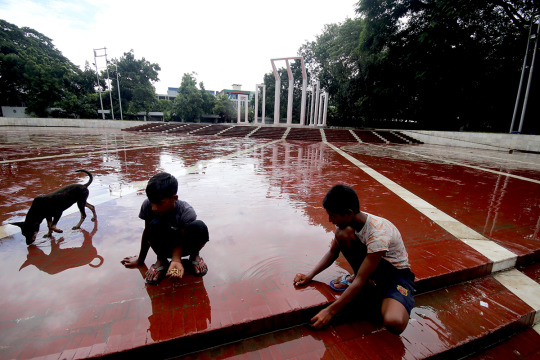

#International_Day_of_the_World_Indigenous_Peoples 09 August_2020_at_COVID19 pandemic_situation. .
the blank central shaheed minar of dhaka city bangladesh where thousands of Indigenous community people and others gatherings would be here with various festive events on this grand international occasion ..
but this year COVID 19 occupation is flooding in rainy day !
শুভেচ্ছা ঃ আন্তর্জাতিক আদিবাসি দিবস ২০২০
The Greetings of : #International_Day_of_the_World_ Indigenous_Peoples - 09 August 2020
……��……………………………………………………
The theme of this year 2020 is : The virtual event’s theme is “COVID-19 and indigenous people’s resilience”
…………………………………………………………………………………………………..
On the occasion of the International Day of the World's Indigenous Peoples, the Indigenous Peoples' Rights Program of the Institute for the Study of Human Rights pays tribute to the struggles of the Indigenous Peoples for dignity, justice and human rights and stands in solidarity with Indigenous Peoples and their communities and the Indigenous human rights defenders.
The International Day of the World's Indigenous Peoples is celebrated with events around the world. The International Day was established by the United Nations General Assembly and was first marked in 1994. The date was selected to honor 9 August 1982, the first day of the very first UN human rights body established to deal with Indigenous Peoples rights, i.e. the UN Working Group on Indigenous Populations. This Working Group worked tirelessly with the Indigenous Peoples' movement and laid down the groundwork for the adoption of the UN Declaration on the Rights of Indigenous Peoples on September 13th, 2007.
A commemorative virtual event is also organized at the United Nations Headquarters in New York by the Indigenous Peoples and Development Branch—Secretariat of the Permanent Forum on Indigenous Issues on Monday, 10 August 2020 from 9 am to 11 am. The virtual event’s theme is “COVID-19 and indigenous people’s resilience” and will feature an interactive panel discussion with several guest speakers. The aim is to highlight how the preservation and promotion of indigenous peoples’ traditional knowledge and practices can be leveraged more fully during this pandemic to build back stronger.
Copyright: #Abdul_Malek_Babul FBPS HonFBPS
* professional & fine art photo artist *teacher
*organizer *dream weaver * pictorial creator
& documentary expert
http://bimboophoto.com/
https://www.youtube.com/feed/my_videos
https://www.flickr.com/people/55321771@N08
[email protected]
[email protected]
+ 88 02 01715298747 & 01305269249
https://www.facebook.com/babulabdulmalek
https://www.facebook.com/bimboophoto
https://www.facebook.com/Save-the-artery-the-buriganga
0 notes
Link
This is the official website of the slow food movement and here i have linked the full history of the slow food movement. I have researched this to find any information that can help me learn more about the slow movement as a whole.
From this history of the slow food movement i have found that there is a big emphasis on home grown / organic ways of doing things. This is important in food but can transfer to other subjects. Like an organic way of thinking or using organic materials and using everything without waste.
Our history
Slow Food: The History of an Idea
Slow Food was started by Carlo Petrini and a group of activists in the 1980s with the initial aim to defend regional traditions, good food, gastronomic pleasure and a slow pace of life. In over two decades of history, the movement has evolved to embrace a comprehensive approach to food that recognizes the strong connections between plate, planet, people, politics and culture. Today Slow Food represents a global movement involving thousands of projects and millions of people in over 160 countries.
2018
The first edition of Terra Madre Nordic takes place in Copenhagen, Denmark.
Creation of the Indigenous Terra Madre Advisory Board. Founding of Slow Food in Russia.
Launch of the international Food for Change campaign.
2017
The 1st edition of Terra Madre Burkina Faso takes place in Ouagadougou.
The 1st edition of Terra Madre des Grands Lacs takes place in Goma (Democratic Republic of the Congo).
The 7th International Slow Food Congress takes place in Chengdu (China).
Slow Food launches the international communication and fundraising campaign “Menu for Change,” which highlights the relationship between food and climate change.
2016
The first ever edition of Terra Madre Salone del Gusto held out in the open, from September 22-26, in Turin, Italy, including a series of conferences at the Carignano Theater. Over half a million people attended.
Terra Madre Balkans held in Tirana, Albania, from June 2-5.
Carlo Petrini was named Special Ambassador Zero Hunger for Europe by the Food and Agriculture Organization of the United Nations in May.
Love the Earth, Defend the Future campaign moves Slow Food towards a more crowd-funded model of financing.
2015
Slow Food Great China is born.
Slow Food hosts a pavillion at EXPO Milano, with exhibitions on biodiversity, vegetable gardens, raw milk cheeses and wine. As part of EXPO, from October 3-6 the “We Feed The Planet” event organized by Slow Food and Terra Madre Giovani brings 2500 young farmers across the world together to to redefine the future of food.
From November 3-7, Indigenous Terra Madre brings indigenous communities from across the world together in Shillong (Meghalaya, northeast India).
From December 12-13, Slow Food Festival – Central Europe is held in Krakow, Poland.
2014
First edition of Slow Meat in Denver, USA.
Tenth edition of Salone del Gusto, and ten-year anniversary of the Terra Madre network in Turin, Italy. The BBC Food Programme participated as media partner of the Ark of Taste project, the main theme of the event.
2013
AsiO Gusto, an event uniting the Slow Food network across Asia and Oceania, is held for the first time in Namyangju, South Korea.
Carlo Petrini receives the highest UN Environmental Award (Champion of the Earth).
2012
Slow Food President Carlo Petrini addresses the UN Permanent Forum on Indigenous Issues in New York.
Carlo Petrini speaks at the “Global Food Security and Nutrition Dialogue” at the UN Conference on Sustainable Development Rio+20.
The Sixth Slow Food International Congress also in Turin, welcomes 650 delegates from 95 countries and ratifies the new guiding policy document The Central Role of Food.
The ESSEDRA (Environmentally Sustainable Socio-Economic Development of Rural Areas) project is launched to map the food biodiversity of the Balkans.
2011
The Slow Europe campaign is launched, calling for European policies that promote sustainability, biodiversity protection and support for small-scale farmers.
The Shalakh apricot becomes the 1000th product to be included in the Ark of Taste.
Indigenous food communities from around the world came together at the first edition of Indigenous Terra Madre held in Jokkmokk, Sweden.
Regional Terra Madre meetings are held in Armenia, Austria, South Korea, Crimea, Japan, Russia and Switzerland.
2010
Regional Terra Madre meetings are held in Azerbaijan, Brazil, Canada, South Korea, Georgia and Kazakhstan, while in Bulgaria the first Terra Madre Balkans event is held.
Presidia from across the Balkans met at the Taste Festival of Ustikolina in Bosnia Herzegovina.
The Gardens in Africa project is launched.
2009
Regional Terra Madre meetings are held in Tanzania, Argentina, Bosnia and Herzegovina, Norway and Austria.
Eurogusto, a biennial event of food, taste and culture that unites the European Slow Food network, is held for the first time in France.
The Alliance between Chefs and Slow Food Presidia is launched, with restaurants commiting to use local Presidia products.
The first Terra Madre Day is celebrated on December 10 by communities around the world to mark Slow Food’s 20th anniversary. Around 200,000 people come together in 1,000 events in 150 countries..
The international Slow Fish network and campaign is launched.
2008
Carlo Petrini is named one of the ‘50 people who could save the planet‘ by the British newspaper The Guardian.
The Terra Madre network organize national meetings in Ethiopia, the Netherlands and Ireland.
Slow Food USA organize Slow Food Nations, a huge celebration of quality sustainable food in San Francisco.
The Earth Markets, a global network of farmers’ markets, is created.
Slow Food Netherlands is created.
2007
The fifth International Slow Food Congress is held in Puebla, Mexico, with 600 international delegates. The Declaration of Puebla is ratified as a pledge to continue the journey started 18 years earlier.
The first regional Terra Madre events are held in Brazil and Belarus.
Vignerons d’Europe is held in Montpellier, France, bringing together European winemakers to discuss sustainable winemaking.
The first Markt des guten Geschmacks, Slow Food Germany’s fair of good, clean and fair food, is held in Stuttgart.
The first Algusto fair is held in Bilbao, Spain.
2006
Slow Food USA establishes the Terra Madre Relief Fund to help Louisiana food communities hit by Hurricane Katrina.
Slow Food UK is created.
2005
The Salão das Comunidades do Alimento event is launched, the first large-scale traditional food event organized by Slow Food in Brazil.
2004
The first edition of Terra Madre – the world meeting of food communities – is held concurrently with the Salone del Gusto in Turin, Italy, attracting about 5,000 delegates from 130 countries.
The University of Gastronomic Sciences is inaugurated in Pollenzo, Italy, close to the Slow Food headquarters.
Genoa hosts the first Slow Fish fair dedicated to sustainable and artisanal fishing.
Slow Food Japan is created.
2003
The Slow Food Foundation for Biodiversity is formed.
2001
The Manifesto in Defense of Raw Milk Cheeses is drawn up, launching the international Slow Cheese campaign.
The Master of Food program, a new educational project for adults, is launched by Slow Food Italy.
2000
The Presidia project is launched.
Slow Food USA is created.
1997
Cheese, Slow Food’s first international fair dedicated to dairy products, is held in Bra for the first time. It goes on to become a biennial event.
1996
Slow Food holds the first Salone del Gusto in Turin, where it presents the Ark of Tasteproject. The Salone goes on to become a biennial event and one of the most important international fairs dedicated to artisanal, sustainable food and the small-scale producers that safeguard local traditions and high quality products.
1993
Slow Food Switzerland is created.
1992
Slow Food Germany is created.
1990
First Slow Food International Congress is held in Venice.
The first Osterie d’Italia guide is published, marking the founding of Slow Food Editore.
1989
The international Slow Food movement is officially founded in Paris and the Slow Food Manifesto is signed.
1986
Slow Food is created in Italy after a demonstration on the intended site of a McDonald’s at the Spanish Steps in Rome.
0 notes
Text
Engaging deep discourse at global platform..! UNPFFI meet sets to protect Indigenous Heritage and Peoples' Rights
Engaging deep discourse at global platform..! UNPFFI meet sets to protect Indigenous Heritage and Peoples’ Rights
New York, May 4: The two week long 18th session of United Nations Permanent Forum on Indigenous Issues (UNPFFI) at UN headquarters, New York, finally concluded on Friday, 3rd of May 2019 adopting a plenty of recommendations aiming at working out of this year’s theme – Traditional Knowledge: Generation, Transmission and Protection.
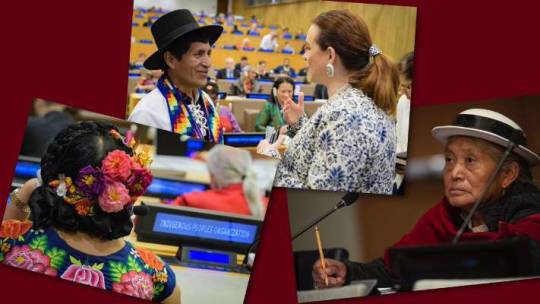
The session kicked off on Monday, 22nd of April with the…
View On WordPress
0 notes
Text
(10th meeting) UN Permanent Forum on Indigenous Issues, 23rd session.
Item 6: Future work of the Permanent Forum, including issues considered by the Economic and Social Council, the outcome document of the World Conference on Indigenous Peoples and emerging issues
The twenty-third session of the UN Permanent Forum on Indigenous Issues (UNPFII) will take place in-person at UN Headquarters in New York from 15-26 April 2024. Theme: "Enhancing Indigenous Peoples' right to self-determination in the context of the United Nations Declaration on the Rights of Indigenous Peoples: emphasizing the voices of Indigenous youth".
The United Nations Permanent Forum on Indigenous Issues (UNPFII) is a high- level advisory body to the Economic and Social Council. The Forum was established on 28 July 2000 by resolution 2000/22, with the mandate to deal with indigenous issues related to economic and social development, culture, the environment, education, health and human rights.
More specifically, the Permanent Forum:
provides expert advice and recommendations on indigenous issues to the Council, as well as to programmes, funds and agencies of the United Nations, through ECOSOC;
raises awareness and promotes the integration and coordination of activities related to indigenous issues within the UN system;
prepares and disseminates information on indigenous issues;
promotes respect for and full application of the provisions of the UN Declaration on the Rights of Indigenous Peoples and follow up the effectiveness of this Declaration (Art. 42 UNDRIP).
Related Sites and Documents
UNPFII Twenty-Third Session website
Provisional Agenda
Watch the (10th meeting) UN Permanent Forum on Indigenous Issues, 23rd session

#tribal groups#aboriginal#indigenous#plenary sessions#right to self determination#unfpii23#united nations headquarters#indigenous rights#indigenous youth#permanent forum on indigenous issues#international work group for indigenous affairs (iwgia)
0 notes
Link
Hereditary chief Na'moks and FredaHuson, longtime spokesperson and resident at the Unist'ot'en camp in Wet'suwet'en territory, made statements to the special rapporteur at the meeting of the UN Permanent Forum on Indigenous Issues in New York.
They expressed concern over how tensions between their leadership, Canadian institutions and industry have been playing out in recent years, asking for the UN to take specific action.
0 notes
Text
Meetings, Subways and Sea Monkey (CMUNCE) XVII
*quick note: this was written a day earlier*
Wow, ok. The last few days have gone incredibly fast and have been jam packed!
Day one began with a wonderful trip on the ole subway. And what an experience that was. Being tightly packed into one carriage made me feel slightly claustrophobic but it was exhilarating at the same time.

The subway took us to Grand Central Station where we had time to take photos and look around. Sarah W, Jason and I took photos with the NYPD who were crazy nice.

NYPD & me
And then we finally headed off to the UNHQ, New York. The tour was really cool, we saw the General Assembly, Security Council and watched as these tourists went right up to the podium in the GA when we were specifically told not to (some of us tried to stick around to see if they would get tackled by security, but that was not to be).

Kawana just hanging out between two of the many panels that were woven and given to the UN as a gift from NZ
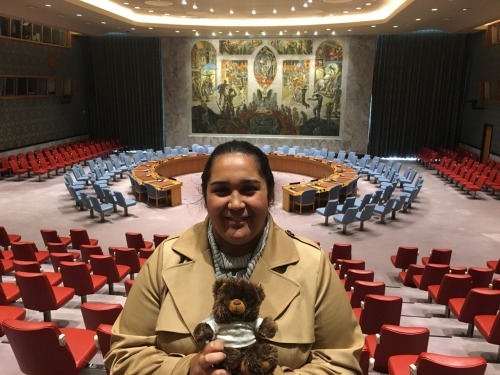
Kawana and I in the Security Council chamber
Kawana and I in the General Assembly
After UNHQ, us dellies and the directors went to Chipotle for lunch. Amazing food. Definitely recommend if you’re ever in the USA.
Then we had a meeting at the NZ Permanent Mission to the UN where we met Ben and Craig. During the meeting, we learned about what the Permanent Mission do, how they work with the government of the day, what it was like during the campaign with Helen Clarke as she ran for Secretary General (#Helen4SG), tips on how to negotiate effectively for CMUNCE and of course the Sustainable Development Goals. The meeting at the Mission was incredibly insightful and could be somewhere I could possibly be working in the future.
Boy oh boy after our meeting, we had a little bit of free time in Times Square and then dinner (at this cute little place called the Little Beet) before Broadway called for us to see Book of Mormon!!!!!! Absolutely no regrets in terms of musical choice. Everyone seemed to enjoy the musical and we definitely had our fair share of laughs throughout.
Day 2 was filled once again. Jordana made a little oops by forgetting where she put her card for the Subway and almost ended up being late to the meeting back at UNHQ with Broddi Sigurðarson from the UN Permanent Forum on Indigenous Issues. A lot of what Broddi had to say was incredibly inspiring. As an individual, I learned about the difference between a declaration and a convention, in terms of indigenous rights NZ is doing alright and Māori are a group others should look to as a model for standing up for these rights, however as a nation there is still much work for us to do to even have these rights acknowledged. I also found myself really asking what does the word indigenous really mean, and what are the criteria to being an indigenous person, as the term indigenous is fairly young.
We were also lucky enough to have one of Broddi’s colleagues, Melissa, come and speak to us about her experience in the UN and potential avenues for young people to enter which was amazing.

The GDT fams with Broddi and Melissa
On this day we had lunch at this place called Bareburger. 100/10 deffs would go back there for a feed 😂
Then we had a meeting with Elliott Harris at UNEP which was really interesting. He was very realistic in terms of what the world needs to do if we are to achieve the Sustainable Development Goals by 2030, and not only should policies be made based solely on one main policy aspect eg economic, social or environmental, but policies should be created which take all three into account (how much will implementation cost? how will this affect the population? how will this affect the environment?).

GDT Squad with Elliott
That night we also we to Top of Rock with had some incredibly views (but is was so cold that my phone started to lose battery faster than normal).

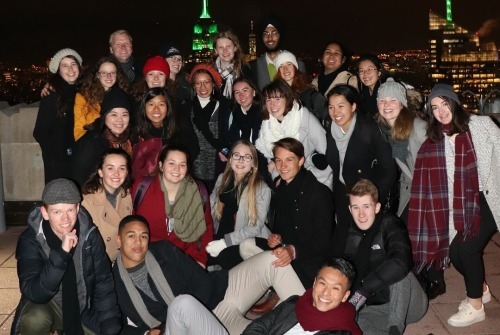
Me and the Squad at Top of Rock
Day 3 was a real eye opener. In the morning we headed to the 9/11 Memorial and Museum. It was sad but also insightful and inspirational to see how New York was able to emerge from such a horrible incident and flourish to become the city it is today. There were a few sections within the museum where my heartstrings were tugged, and a couple of tears fell from the eyes, but overall it was absolutely amazing.
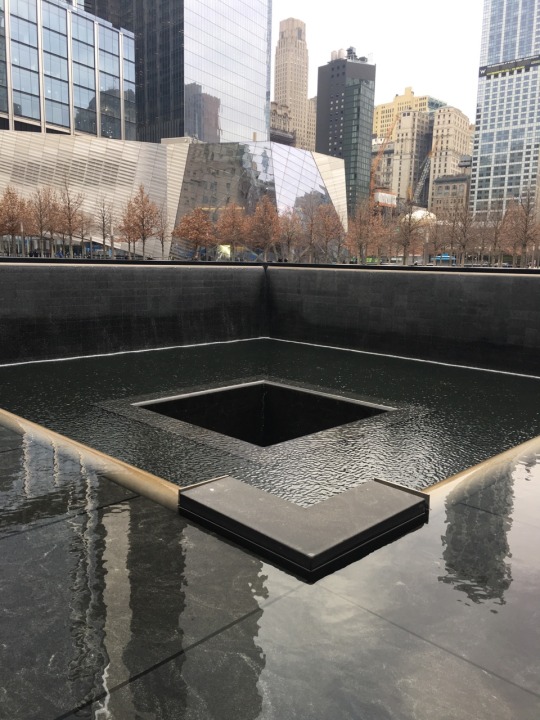
South Block memorial
After the 9/11 Memorial, the CMUNCE nerves began to settle in. As a delegation, we had heard a few horror stories as to what American delegates were like. But during the opening ceremony, all those stories were forgotten when we found out we had been pronouncing CMUNCE (Sea-munce) wrong. It’s actually pronounced Sea-Monkey. No joke. We all thought it was a joke but we found out fairly quickly that it’s not. That’s the legitimate name of the conference.

Te Ruki and I had our first committee session of The Year of Living Dangerously, Dwikora Cabinet, Indonesia 1965. It was interesting to see how on topic delegates we able to stay throughout our first 2 hour session. We did decide to gage where everyone was at before we wanted to make any moves. The other delegates in the Cabinet were very good at getting into character, so T and I definitely need to practice (lol).
*post finished*
I hope everyone back home is well. Jordana is having a ball of a time and it’s only been 4 days. I absolutely love the delegation, the directors and everything we have done so far! And I can’t wait to update everyone on how Sea-Monkey went!!!!! I’ll catch you guys on Monday/Tuesday 💞💞💞
0 notes
Link
Earlier this year, Pertame language champion, Vanessa Farrelly and her grandmother, Kathleen Bradshaw, attended the UN Permanent Forum on Indigenous Issues Global Indigenous Language Training in New York to learn about Master-Apprentice Language Revival. Here is their story... https://ift.tt/2ULvzQ6 #firstlanguages #pertame
0 notes